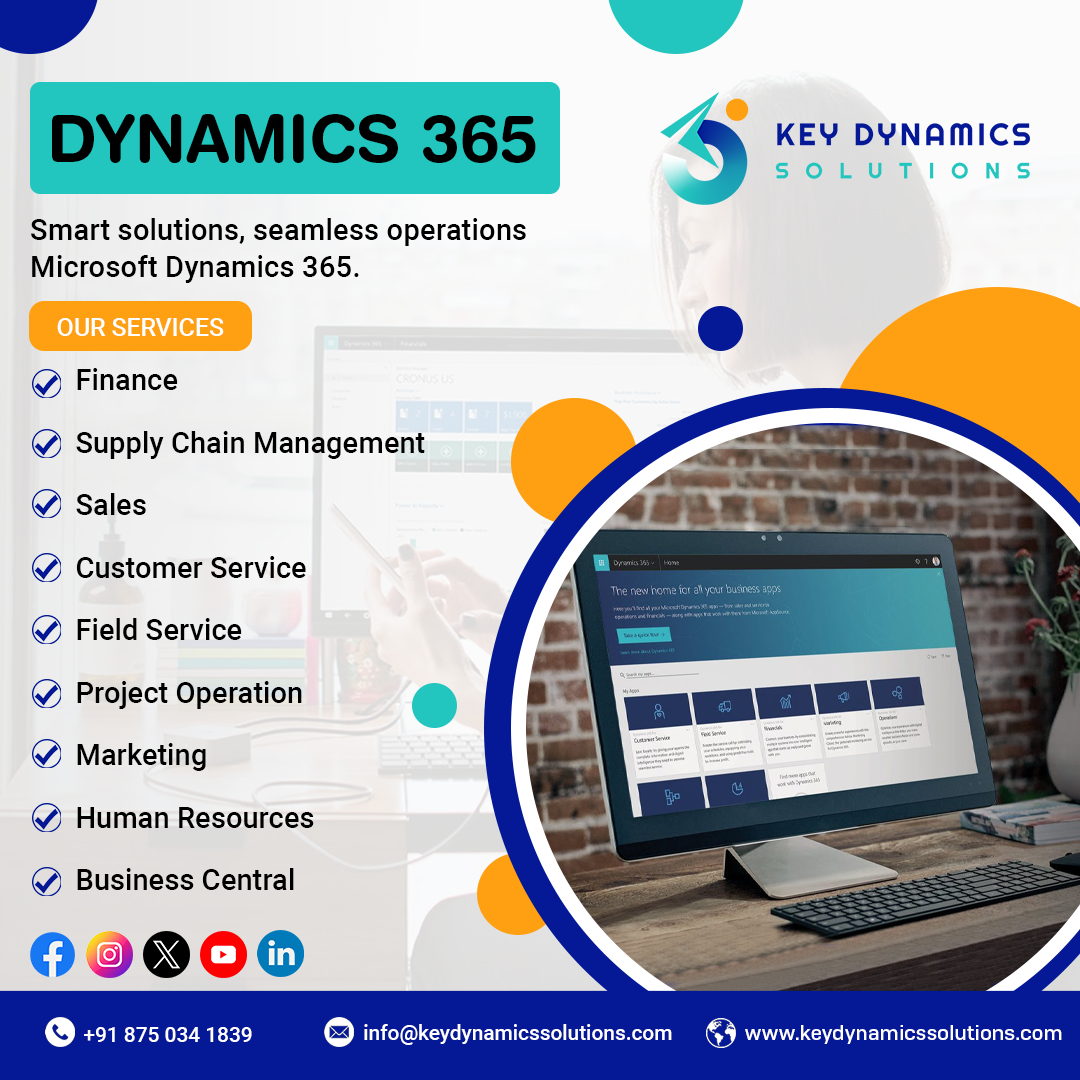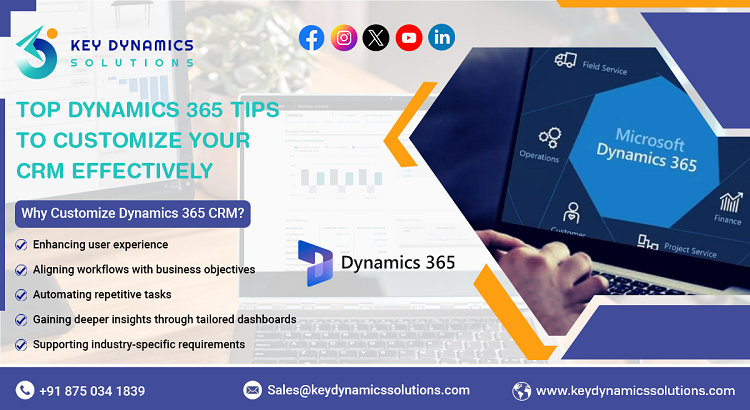Integrating Azure Data Factory with Dynamics 365 Finance and Operations

Strong 8k brings an ultra-HD IPTV experience to your living room and your pocket.
As data becomes increasingly central to business success, organizations are seeking reliable and scalable ways to move, transform, and visualize data across their ecosystems. Among the most impactful integrations in the Microsoft ecosystem is Azure Data Factory (ADF) with Dynamics 365 Finance and Operations (D365 F&O). This integration is a cornerstone of Azure Data & BI Services, empowering businesses to make data-driven decisions with tools like Power BI.
This article explores how businesses can leverage Azure Data Factory to extract and orchestrate data from Dynamics 365 F&O and turn it into meaningful insights through Power BI, while maintaining data accuracy, scalability, and operational efficiency.
Understanding the Key Components
Azure Data Factory (ADF)
Azure Data Factory is Microsoft’s cloud-based data integration service. It allows you to create data-driven workflows for orchestrating and automating data movement and data transformation. ADF supports connecting to a wide range of on-premises and cloud data sources and can process large volumes of data at scale.
Dynamics 365 Finance and Operations
Dynamics 365 F&O is an enterprise resource planning (ERP) application that helps businesses manage their global financial systems, operations, and supply chains. The platform stores massive volumes of structured data—everything from transactions to vendor management and budgeting.
Why Integrate Azure Data Factory with D365 F&O?
Organizations that use Dynamics 365 F&O often need to extract data for reporting, data warehousing, machine learning, or downstream processing. However, the raw data in D365 F&O is complex and not directly optimized for reporting or analytics.
Azure Data Factory solves this by providing the tools to:
- Extract data from D365 F&O in a structured and scheduled manner.
- Transform and clean the data using Azure Data Flows or by leveraging Azure Synapse or Databricks.
- Load the transformed data into Power BI datasets, Azure Data Lake, or SQL-based data warehouses.
This forms the foundation of effective Azure Data & BI Services.
Key Steps in the Integration Process
- Setting Up the Export in Dynamics 365 F&O
D365 F&O includes an out-of-the-box feature called Data Management Framework (DMF). This framework allows data entities to be exported to Azure Data Lake or Blob Storage. The steps include:
- Identifying the data entities required (e.g., Customer, SalesInvoiceHeader, LedgerJournal).
- Setting up a recurring export project in DMF.
- Exporting data to Azure Blob Storage or Data Lake Gen2 in Common Data Model (CDM) format.
- Using Azure Data Factory to Ingest Data
Once the data is in the data lake:
- ADF pipelines can be used to ingest this exported data.
- Mapping Data Flows or external activities can convert CDM-formatted data into tabular or relational formats.
- ADF can clean, deduplicate, and join datasets using scalable compute resources.
ADF supports advanced scheduling and triggers to ensure data is always up to date without manual intervention.
- Transforming and Storing the Data
Transformed data can be stored in:
- Azure SQL Database for relational querying.
- Azure Synapse Analytics for large-scale data warehousing.
- Azure Data Lake for scalable, schema-on-read analysis.
This structured data is now ready to power business insights.
- Visualization in Power BI
Power BI can directly connect to Azure SQL, Synapse, or Data Lake to create dynamic reports and dashboards. You can use prebuilt templates or build custom visuals to track KPIs like:
- Cash flow analysis
- Inventory turnover
- Budget vs. actual
- Vendor performance
With Power BI’s interactive capabilities, users can filter, drill-down, and explore financial data in real time, bringing immense value to finance and operations teams.
Benefits of the Integration
- Improved Decision-Making
Access to clean, transformed data from D365 F&O enhances strategic planning. Financial teams can track expenditures, monitor cash flows, and compare actuals with budgets in real-time.
- Automation and Efficiency
By leveraging Azure Data Factory’s orchestration capabilities, data pipelines can run on schedules or triggers. This removes manual export/import operations and ensures fresh data is always available.
- Scalability and Flexibility
ADF supports batch processing, parallelism, and distributed computing, which is ideal for enterprises with large datasets in F&O. As data grows, the system scales without additional infrastructure overhead.
- End-to-End Azure Ecosystem
Using Azure-native tools ensures seamless integration, centralized monitoring via Azure Monitor, and robust data governance.
- Security and Compliance
With support for Role-Based Access Control (RBAC), encryption, and private endpoints, organizations can maintain strong security and compliance postures.
Use Case: Financial Reporting Dashboard
A multinational manufacturing company needed to consolidate financial performance across multiple regions using D365 F&O. By integrating Azure Data Factory with D365 F&O and visualizing through Power BI:
- ADF orchestrated daily exports from D365 F&O to Azure Data Lake.
- Mapping Data Flows cleaned and normalized the data.
- Transformed data was stored in Azure Synapse.
- Power BI dashboards provided CFOs with real-time financial KPIs.
The result? A 60% reduction in manual reporting time and faster monthly close cycles.
Best Practices
- Start Small: Begin with high-value entities (e.g., customers, vendors, general ledger) before expanding.
- Use Incremental Loads: Avoid full exports; use change tracking in D365 F&O for efficient delta loads.
- Monitor Pipelines: Set up alerts and logs to proactively catch and resolve failures.
- Secure Data Movement: Use managed identities and private endpoints to limit exposure.
- Align Data Models with BI Requirements: Design your transformed datasets to match Power BI’s consumption needs.
Future Outlook
As Microsoft continues to invest in integration between Dynamics 365 and Azure, we can expect more out-of-the-box connectors, improved performance in Data Lake exports, and tighter coupling with tools like Azure Synapse and Fabric. Organizations leveraging these capabilities will stay ahead in building resilient, data-driven financial operations.
Conclusion
Integrating Azure Data Factory with Dynamics 365 Finance and Operations is a powerful move for organizations aiming to enhance their Azure Data & BI Services. The synergy between Azure’s robust data movement tools and the rich data stored in D365 F&O lays the groundwork for transformative insights through Power BI.
Whether your goal is real-time reporting, historical trend analysis, or operational forecasting, this integration is a foundational step in modern data architecture.
Note: IndiBlogHub features both user-submitted and editorial content. We do not verify third-party contributions. Read our Disclaimer and Privacy Policyfor details.







